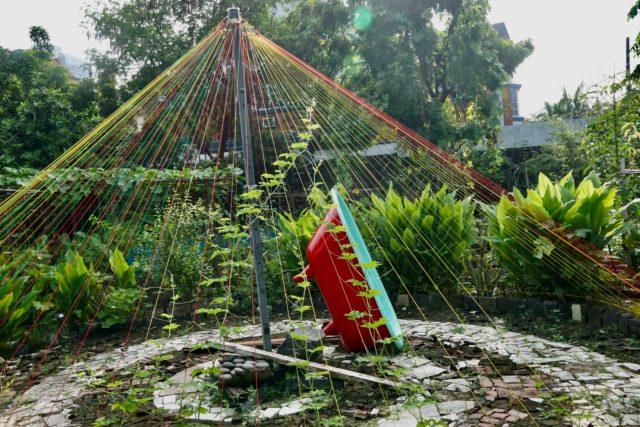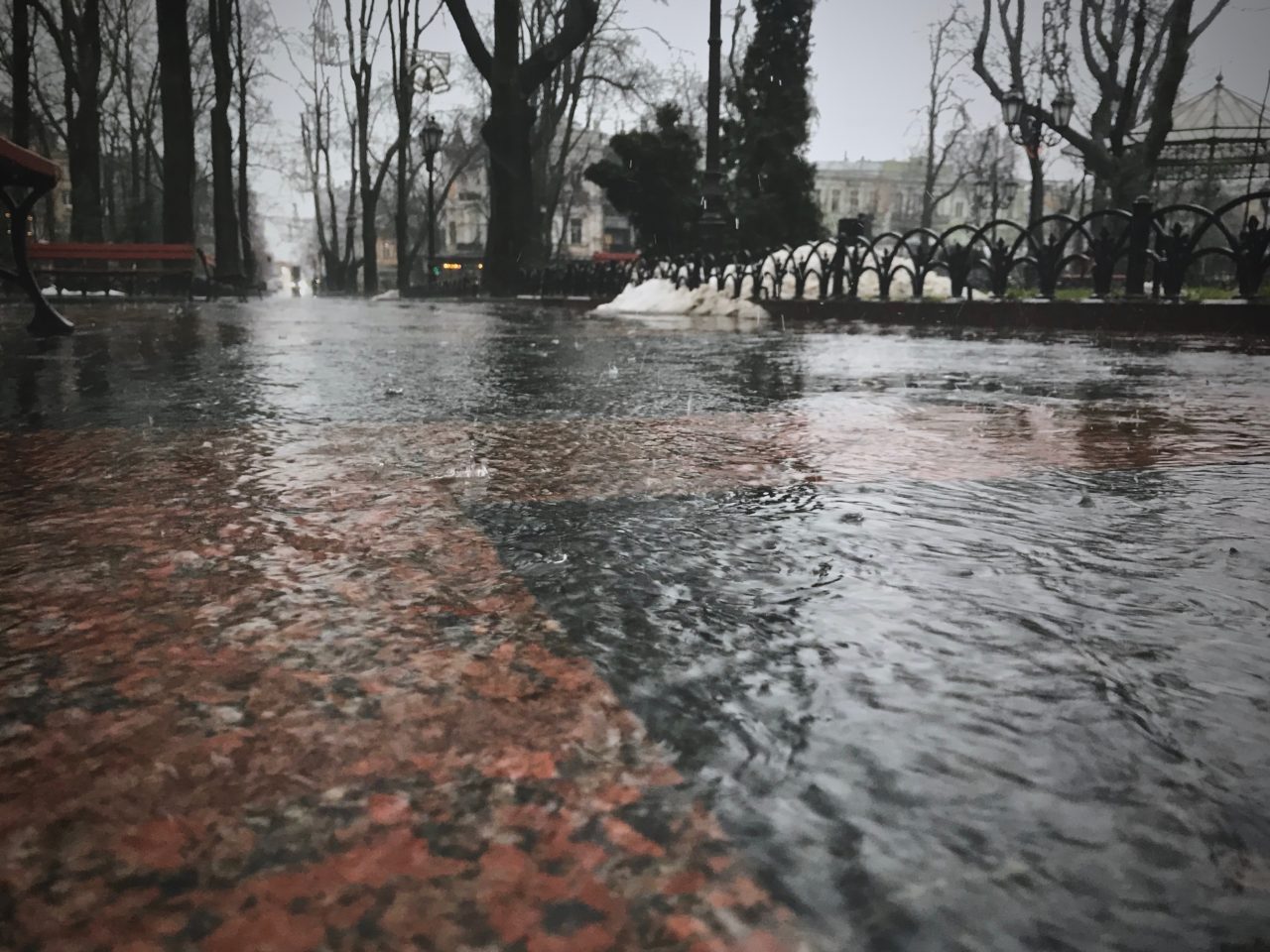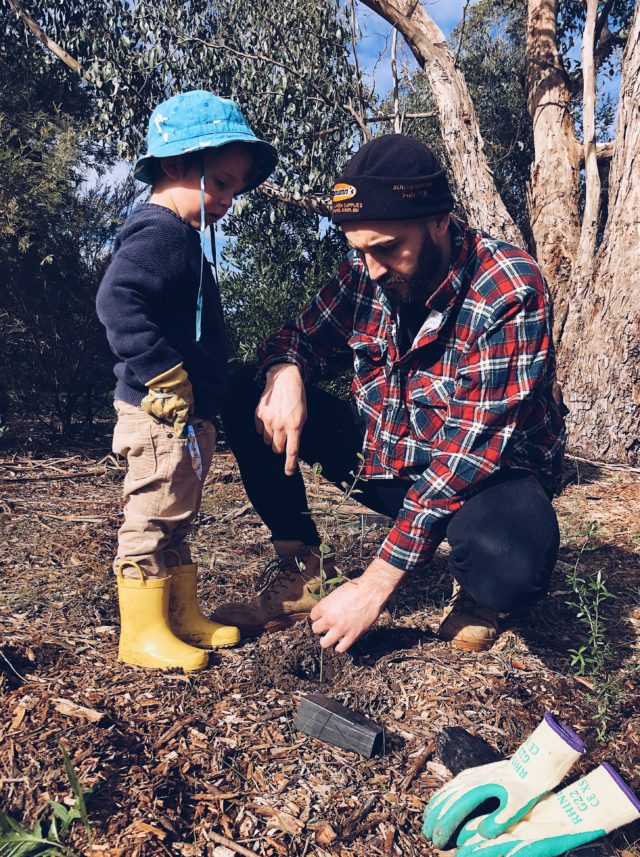In early spring, water abounds. Melting snow, dripping icicles, and rainstorms turn what was recently solid ground into a muddy sponge. Here at Nature Works Land Care, we welcome the wet season and all it brings. But muck and runoff can be costly––even dangerous––when not managed properly.
WHAT IS WATER MANAGEMENT?
On a municipal level, cities and towns are responsible for ensuring that their jurisdictions are well-drained and free from hazards. Cities allocate large portions of their budgets to maintaining storm-water management systems and fixing infrastructure damaged by the elements. Homeowners have similar responsibilities but on a smaller scale: rerouting seasonal runoff to keep lawns and driveways dry, minimizing seasonal puddles, and addressing erosion caused, to name a few. When summer arrives, the issue is inverted; lawns and gardens must be irrigated in order to prosper and water must be found and distributed. During drier months, this usually means drawing from wells and reservoirs, sometimes from a great distance, and often at significant cost.
Traditionally, cities have created large networks of pipes, ditches and storm drains while simultaneously pumping water in from external sources. On privately managed land, re-graveling driveways and clearing clogged ditches is the annual drudgery of springtime, matched with elaborate sprinkler systems (or laborious hours of hand-watering) in summer and early fall.

Conversely, sustainable approaches to water management use resources already present in a local environment, engineering and redistributing them as needed within that system. Catching and storing rainwater is one example of a sustainable way to manage water; it reduces flow that would otherwise be diverted from walkways and can be reused to irrigate lawns and gardens. Sustainable water distribution systems can range from simple barrels placed under gutters to complex drip irrigation networks. Local conditions, resources, and needs dictate the details.
Neighborhoods and municipalities who invest in sustainable land management must balance more factors––and potentially conflicting concerns––than individuals do, but the principle remains the same. Beneficial impact on the surrounding community expands proportionally as well.
As hyper-localized interventions, sustainable approaches require knowledge of the specific environment in question; what might be ideal for one client might not be the best solution for another. Because of this, they often requires an initial investment of research and strategizing. Once implemented, however, upkeep is often far less than it would be with a conventional approach.

WHY SUSTAINABLE WATER MANAGEMENT MATTERS
Communal benefits to sustainably management go well beyond dollars saved or even associated environmental benefits. When approached thoroughly, sustainable land and water management requires rethinking of how human communities organize our neighborhoods, shared resources, and lives. Outdated assumptions must be questioned and opportunities to creatively approach problems present themselves. When viewed through this lens, it quickly becomes clear that––as in any ecosystem––seemingly disparate problems are intimately interconnected. Comprehensively addressing one issue improves outcomes in other domains. In a post on ecolandscaping.org, Anna Shipp, Executive Director of the Sustainable Business Network of Greater Philadelphia, illustrates the inextricable connection between environmental and social justice. Her post, entitled “Green Stormwater Infrastructure: A Tool for a Thriving, Resilient and Equitable Local Economy,” presents a thorough and compelling account of the city Philadelphia’s institution of a green storm-water management system. It has had astronomical impacts on everything from crime levels to mental health. While Philadelphia’s plan cannot simply cut-and-paste to fit any city, it is a valuable blueprint from which inspiration can be drawn.
HOW YOU CAN HELP
As humans, we influence our ecosystems whether or not we are aware of it. By increasing our awareness, we increase the choices we have as land stewards and members of a larger animal and plant community and our potential positive effects. Planting native species, designing gardens that work with the local ecosystem, reusing rainwater, installing drip irrigation, and hiring knowledgeable companies committed to sustainable practices are some examples of these choices on an individual level.
Ecology teaches us that we are all connected. Pollinators, pollution, water, and wind do not respect arbitrary property lines. The choices of our neighbors, local businesses, city and state government have immeasurable effects on local habitats. For those ready to increase their impact, educating yourself and others on environmental and social issues effecting your community is a great place to start. Some days, this might involve diving deep into books, articles, and podcasts on the science of sustainability. Or perhaps connecting with groups who are already organizing around issues you care about. Other times, it might mean explaining your sustainable irrigation system to a friend over a cup of tea. Voting with dollars and in the ballot box is essential, as is s lobbying for environmental and social issues in your community. Advocating for creative solutions, we can ensure that counterproductive “conventional” solutions (which beget more problems in the long-term) do not remain the default
5 SUSTAINABLE WATER PRACTICES FOR YOUR GARDEN
1) Collect rainwater in barrels
Save it to use on dryer days. Plants love rainwater because it’s free from the additives like chlorine and fluoride that cities sometimes add to their water supply. Plus, it doesn’t cost a dime, and reduces puddles.
2) Work with the environment and match plants to their surroundings
Learn about your local ecosystem, research native species, and plant accordingly. If your soil is sandy, beach heather is a better choice than ferns. Native plants are naturally adapted to thrive in the local environment so they are more efficient––and less finicky––than non-native varieties. To maximize this benefit, research which native plants pairing naturally aid each other and plant them together.
3) Water mindfully
Rather than soaking your yard indiscriminately, learn how much hydration each plant needs, the water accordingly. Use drip irrigation and soaker hoses when possible, and water plants at the roots when you can’t. (In addition to potentially damaging the leaves, watering plants from above is very inefficient, as much of the water never makes it to the roots).
4) Don’t pave your pathways
Permeable alternatives to pavement limits erosion––and possible plant-damage––by reducing runoff. Crushed stone, mulch, and permeable pavers are all great options. For driveways, make sure drainage routes are clear; water will find it’s way to lower ground one way or another, even if it’s through your garden bed or by pooling into mucky puddles, so be sure that it has somewhere to flow that won’t cause chaos.
5) Find a sustainability partner
You don’t need to go on this journey alone! Search out like-minded friends, neighbors, and community groups for camaraderie, advice and support. Consider hiring a professional landcare company that specializes in Earth-friendly, sustainable practices. Nature Works Land Care is deeply committed to stewardship of land and community. We understand that, as humans, we are not separate from the natural world. We believe in upholding an authentic, reciprocal relationship with the Earth and its beings. You can find more information on our philosophy and approach here. For a consultation on sustainable water management, or other land care projects, contact us.



